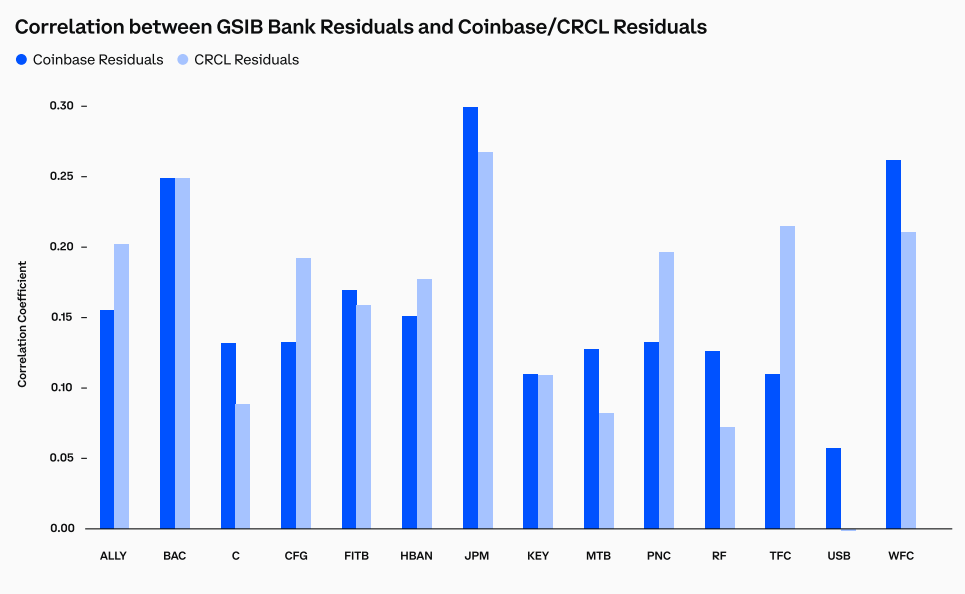Stablecoins do not meaningfully drain U.S. bank deposits, Coinbase argues: most stablecoin flows are international, used as faster payment rails, and largely reinforce dollar dominance rather than causing domestic “deposit erosion.”
-
Stablecoins are primarily payment tools, not savings accounts.
-
Most stablecoin activity occurs outside the U.S., especially in Asia, Latin America and Africa.
-
Coinbase cites IMF data showing over $1 trillion of 2024 stablecoin transactions took place abroad.
Stablecoins drain US bank deposits is debatable — read why Coinbase says deposit erosion is a myth and what banks should do next. Learn more with COINOTAG.
Do stablecoins drain US bank deposits?
Stablecoins do not meaningfully drain US bank deposits according to Coinbase, which says evidence points to international payment use rather than domestic redeployment of savings. The exchange argues that most flows support global dollar use and do not materially reduce credit availability in U.S. banks.
Why does Coinbase say deposit erosion is a myth?
Coinbase counters the deposit erosion claim by noting that stablecoins are used as payment rails and for cross-border transfers rather than as long-term deposit substitutes. The company references a recent paper and analysis, and cites data attributed to the International Monetary Fund showing a large share of stablecoin transactions occur outside the United States.
What evidence supports the claim that stablecoins have limited impact on U.S. deposits?
Coinbase points to transaction geography and published analyses. Citing the International Monetary Fund (IMF), Coinbase notes that more than $1 trillion of roughly $2 trillion in stablecoin transactions in 2024 happened outside the United States. That pattern suggests stablecoins primarily serve cross-border commerce and dollar-denominated payments rather than reallocating U.S. household savings.
How did regulators and industry groups respond?
U.S. banking groups, led by the Bank Policy Institute, warned lawmakers about potential deposit flight and urged tightening of the GENIUS Act. Coinbase and crypto trade groups pushed back, arguing the proposed fixes could stifle innovation. Industry voices such as Bitwise investment chief Matt Hougan criticized banks for not improving depositor yields instead of pointing to stablecoins as the problem.

Correlations between banks and crypto firms were positive following the GENIUS Act. Source: Coinbase
How should banks respond to stablecoin competition?
Banks can respond by modernizing retail offerings and improving rates for depositors. The current debate highlights a competitive pressure point: stablecoins offer faster, often cheaper payment methods, and banks that fail to adapt risk losing transactional volume rather than core deposits.
Frequently Asked Questions
Will stablecoins reduce bank lending in the U.S.?
There is no clear evidence that stablecoins have reduced U.S. lending. Coinbase argues that stablecoins primarily facilitate international payments, which supports dollar usage abroad without materially impairing domestic credit availability.
How big is international stablecoin usage?
Industry analyses and IMF-cited data indicate that over $1 trillion of about $2 trillion in 2024 stablecoin transaction volume occurred outside the U.S., particularly in regions with weaker local payment infrastructure.
Key Takeaways
- Most stablecoin flows are cross-border: Large shares of 2024 transactions occurred outside the U.S., supporting global dollar use.
- Stablecoins function as payment rails: They are generally designed for transactions, not long-term savings.
- Banks should adapt: Improving depositor yields and payment services can reduce competitive pressure from stablecoins.
Conclusion
Coinbase maintains that the assertion “stablecoins drain US bank deposits” overstates the case. Evidence cited emphasizes international payment utility and dollar reinforcement rather than domestic deposit erosion. Regulators and banks are now debating policy fixes and competitive responses; the near-term focus should be on measured regulation and product modernization. COINOTAG will continue to monitor developments and report updates.
